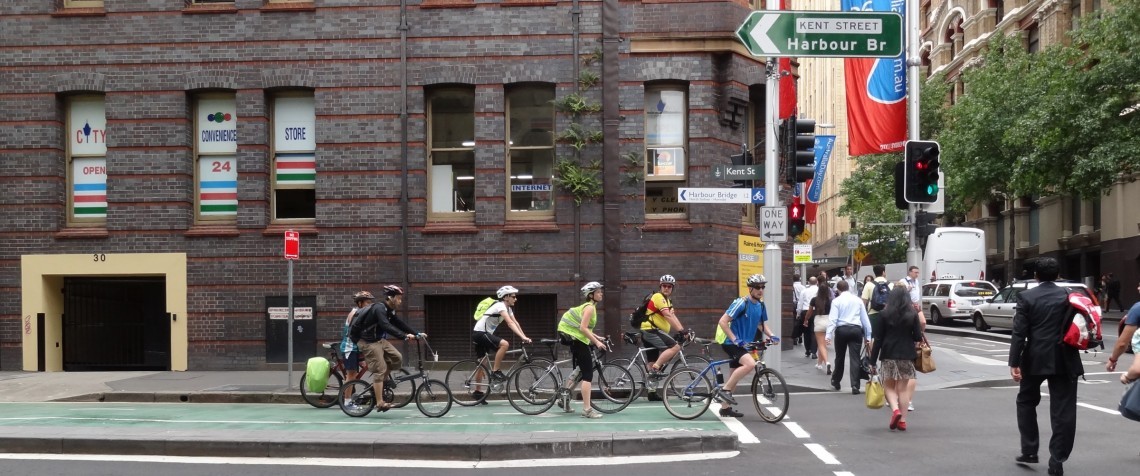‘Spaghetti Junction’ That’s the nickname of Sydney’s latest transport debacle, the $20bn WestConnex Rozelle Interchange project that was promised to cut travel times and create quicker and more seamless commuting.
Instead of that it has become a giant bottleneck, created car, bus & truck gridlock, and led to travel times of up to an hour for a 2 to 3km journey.
Effectively a giant funnel, the project has disrupted locals for the past decade with the noise of 24hr tunnelling. It required the forced acquisition of 200 homes, and doubled in budget being originally costed at ten billion dollars.
And it doesn’t include any bike infrastructure, other than a narrow shared footpath/ bike path.
More Bikes Less Cars
Back in November 2019 vitamin and supplement company Swisse Wellness launched Australia’s first Ride to Work Scheme, an opportunity that offers employees the attraction of a tax deductable salary sacrifice for the purchase of commuter cycling equipment.
The scheme is based on a similar concept that’s been in place in many countries around the world. The UK’s ‘Cyclescheme’ is probably the most popular – Cyclescheme is an employee benefit that saves commuters 25 to 40% on a bike and accessories. ‘You pay nothing upfront and the payments are taken tax efficiently from your salary by your employer,’ says the sales blurb that’s pushed and promoted right around the country.
Not only a smart way to get thousands of vehicles off the road, the scheme helps support local bike shops with sales and ongoing service, offers commuters long-term health benefits, delivers less noise, pollution and way less stress.
The Swisse Wellness Australian Ride to Work Scheme offers employees the option of a $2,000/pa loan to purchase cycling equipment to ride to and from work. Over 12 months, employees repay this amount from their pre-tax salary, accessing savings of up to approximately 32% on their investment.
The scheme operates on similar principles as salary sacrificing a car and is similar to London’s popular ‘Cycle to Work’ scheme launched more than 20yrs ago in 1999.
Swisse Wellness Managing Director Oliver Horn said the company’s mission is to make people healthier and happier.

“Our aim is to inspire other businesses in Australia to adopt the scheme so that more Australians can enjoy the benefits of cycling to work,” he said.
“Working in London for many years, I was first introduced to the UK scheme in 2013 and have been cycling to work ever since. I am now fitter and faster into work, it’s great for the environment and it doesn’t cost me a penny. I am happier and healthier because of it.”
Encouraging More To Commute By Bike
Comparatively globally, average cycling rates in Australia are very low. Only 125,000 workers (1.4% of total commuters) ride a bicycle to work. This is a very low figure (for a flat and dry country) compared to Northern and Western Europe where average cycling rates are ten times that of Australia (#1 Netherlands 43% participation, #2 Denmark 30% participation).
A major reason behind these comparatively lower ‘commute by bike’ figures is our lack of quality bike infrastructure. Thinking back to the Rozelle Interchange fiasco – imagine the kind of infrastructure just 1/10th of the total budget – $2bn – could build.
The Australian Bureau of Statistics reports almost 7 million people drive to work every day. That means for every bike commuter there are 56 car commuters on the road. Schemes such as this seek to reduce this divide and increase cycling participation in Australia; helping to resolve congestion, improve health outcomes and positively impact the environment.
The Rise & Rise Of Ride To Work Schemes
Ride to Work Schemes have witnessed great success around the globe, with leading UK scheme provider CycleScheme, today attracting almost 800,000 participants. UK scheme findings report a 91% increase in journey’s on bikes over the last decade, more than 50% taking up the scheme being new to cycling, 76% users say they would not have bought a bike had the scheme not existed, and 87% participants report a noticed improvement in their health after starting to ride to work.
“The success overseas is evident and Swisse is committed to championing this scheme to become a national initiative in Australia,” a Swisse representative said. “We are excited to work in partnership with like-minded industry stakeholders to drive and scale this scheme nationally and the Australian Government to help create further opportunities that incentivise and support all Australian businesses to readily adopt a national Ride to Work Scheme.”





